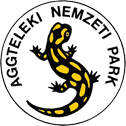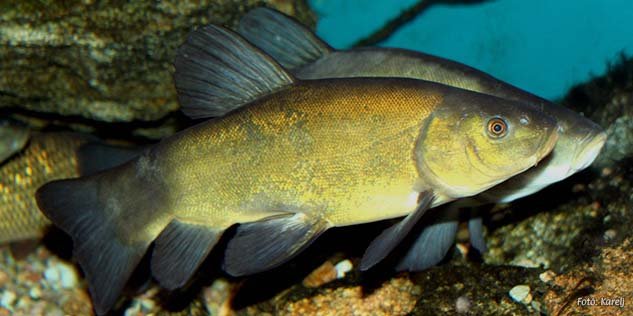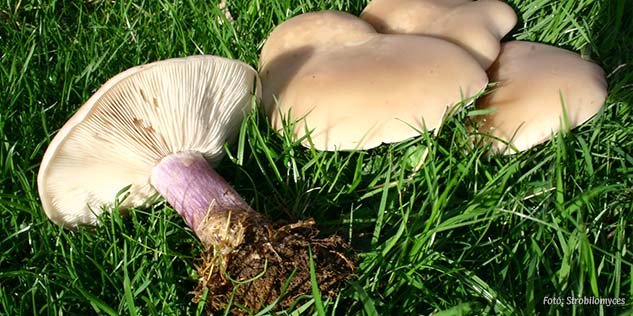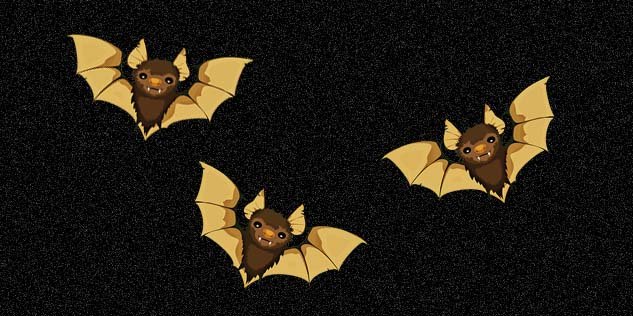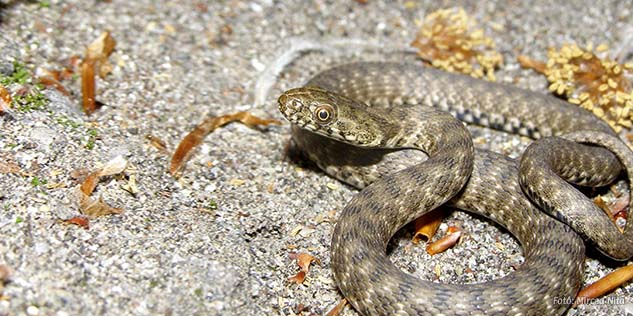
The dice snake (Natrix tessellata) is a European non-venomous snake belonging to the family Colubridae, subfamily Natricinae.
Females are bigger than males. Their maximum size is 1.0-1.3 m (39-51 inches) long. The colour may vary from greyish-green to brownish or almost black, with dark spots on the back. The belly is sometimes vividly coloured in yellow or orange, with black spots, very similar to dice, hence the name.
Living mainly near rivers, streams or lakes, it frequently feeds on fish. It also sometimes feeds on amphibians like frogs, toads and tadpoles.
As a defence mechanism it spreads a very bad smelling secretion from its posterior orifice, or plays dead.
During the mating season (March–May) they congregate in large groups. Eggs are usually laid in July, with a typical clutch consisting of 10-30 eggs. The young snakes hatch in early September. Dice snakes hibernate from October to April in dry holes near the water.
The dice snake is found throughout Europe and Asia.
